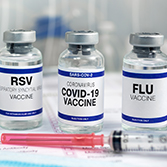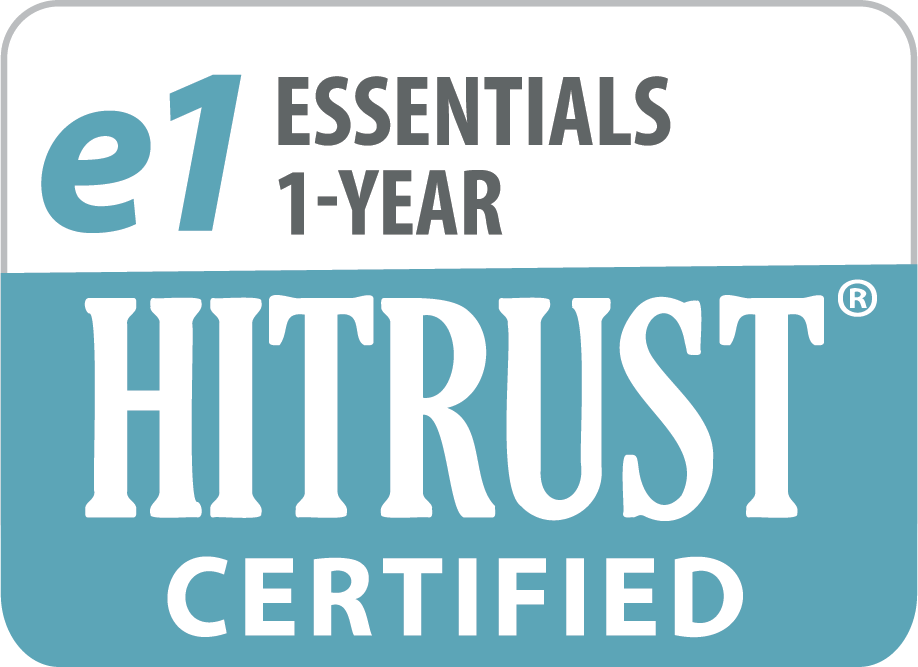Resource Center
Respiratory Illnesses
Respiratory illnesses affect the lungs and airways and are caused by respiratory viruses such as those listed below. These illnesses share similar symptoms and risk factors, and every year, during the fall and winter virus season, these illnesses are responsible for hundreds of thousands of hospitalizations and thousands of deaths in the United States. Fortunately, in the United States, we have more tools than ever before to help people protect themselves, their families, and communities from severe respiratory illnesses.
-
Influenza (Flu) is a contagious respiratory illness caused by influenza viruses that infect the nose, throat, and sometimes the lungs. It can cause mild to severe illness, and at times can lead to death. The best way to reduce the risk of seasonal flu and its potentially serious complications is to get vaccinated each year.
-
COVID-19 is an infectious disease caused by the SARS-CoV-2 virus that most often causes respiratory symptoms that can feel much like a cold, the flu, or pneumonia, but other parts of your body may also be affected by the disease. Most people with COVID-19 have mild symptoms, but some people become severely ill. People who are up to date with their COVID-19 vaccine have lower risk of severe illness.
-
Respiratory syncytial virus (RSV) is a common respiratory virus that infects the nose, throat, and lungs. RSV does not usually cause severe illness in healthy adults and children. However, some people with RSV infection, especially older adults and infants younger than 6 months of age, can become very sick and may need to be hospitalized.
As part of Ventegra's commitment to helping you keep your employees, members, or patients healthy, and keeping the cost of health care affordable, we are providing you with this respiratory illness resource kit.
All the materials in this tool kit were curated from nationally recognized organizations and they have also been reviewed by our clinical pharmacy team.
Resources for
- About Respiratory Illnesses (CDC)
- Respiratory Illnesses Data Channel (CDC)
- Respiratory Virus Guidance (CDC)
- Treatment of Respiratory Viruses (CDC)
- Staying Safe from Respiratory Infections: Tips for those with Chronic Conditions (ATS)
- Protecting Your Baby from RSV (ACOG)
- Pregnant? Top 3 Reasons Why You Need the RSV Vaccine (ACOG)
- National Foundation for Infectious Diseases Resource Library (NFID)
Vaccine Schedules
All Age Groups
- Fall 2025-26 Immunization Recommendations for birth to seniors (AAFP)
- Immunization Schedules, 2025 (CDC)
- West Coast Health Alliance 2025 – 2026 Respiratory Virus Season Immunization Recommendations, September 26, 2025 (WCHA, in alignment with AAFP, AAP, ACOG)
Pediatrics (Birth to 18 years)
Pregnancy
Statements About Vaccine Access & Coverage
- AHIP Statement on Vaccine Coverage (AHIP, September 16, 2025)
- Your Fall 2025 Vaccine Guide Overview by Academic Experts (AAMC)
Additional Resources
Suggestions for Sharing This Information
Using frequent and multiple channels for communications is more effective than a one and done approach. Consider the following options.You may choose to have it originate from a leadership member or healthcare professional to lend it credibility and earnestness. Download this sample message to get started.
Create and place a banner on flu vaccination and a link to the educational resources included above.
Create a sense of timeliness and importance by adding it to your next meeting agenda‐ a high-priority agenda item for department meeting or other team meetings. Ask your department leads to review with their team preventive measures and the importance of flu vaccinations. Include locations where they can get a flu vaccination, if appropriate. Consider sharing slides with this information.
Craft a voice-mail blast using the voice of a well-known leadership member or healthcare professional on the importance of staying up to date on immunizations, how to get vaccinated, and where to find educational material to support their outreach efforts.





